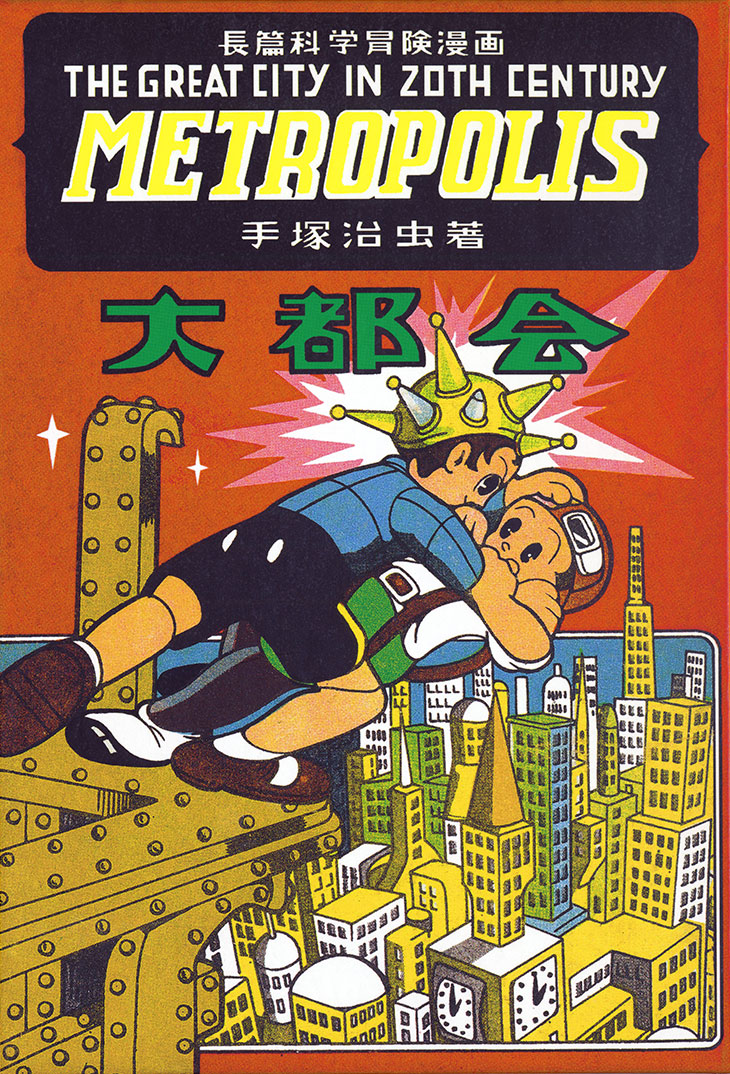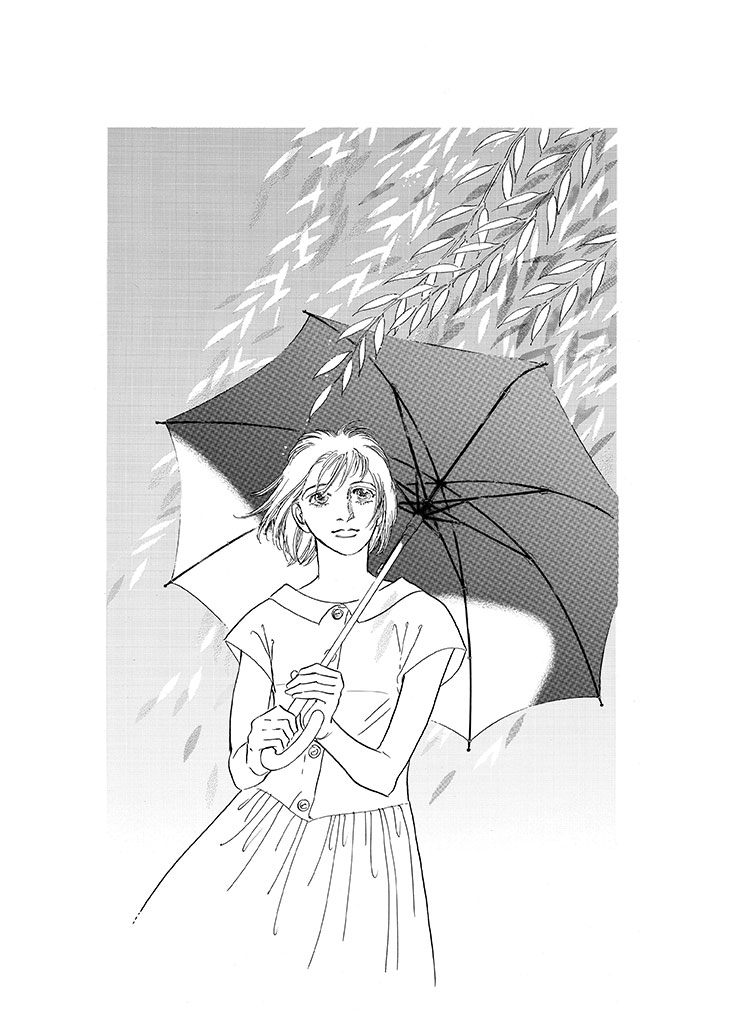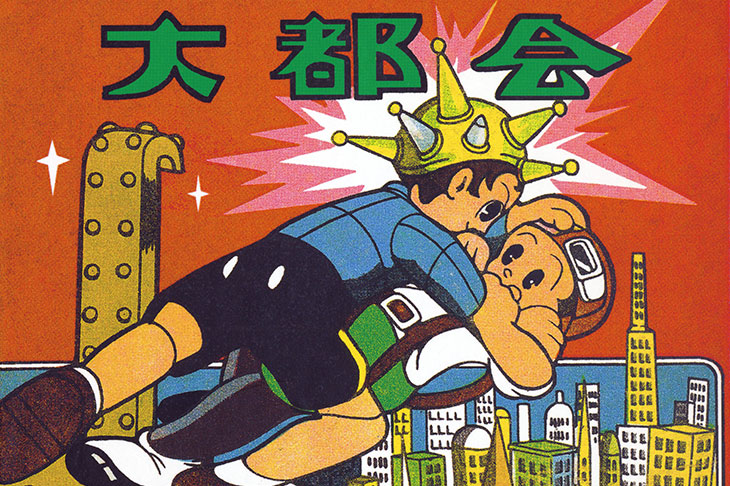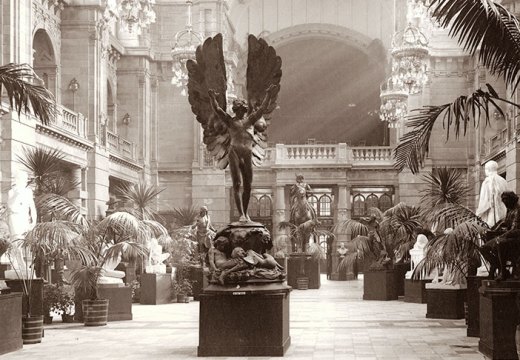A 17-metre-long curtain runs along one of the walls of the exhibition space where ‘Manga’ is on display at the British Museum. Kawanabe Kyosai’s Shintomiza Kabuki Theatre Curtain, produced in 1880, is covered in images of demons and Kabuki actors familiar to Japanese theatre-goers of the time. Outlined in broad inky strokes, the cartoonish faces are painted white with red details, emerging from a blue-grey mist of a backdrop. More than a century ago, they would have leered at theatre audiences during intervals between Kabuki performances.

Shintomiza Kabuki Theatre Curtain (1880), Kawanabe Kyosai. © Tsubouchi Memorial Theatre Museum, Waseda University
The curtain, with its highly expressive, exaggerated characters, gives an idea of what preceded the comics and graphic novels of contemporary manga. In fact, Kyosai and his contemporaries, following in Hokusai’s footsteps, also produced books that were known as manga: compilations of woodblock prints depicting all manner of scenes. The early manga would be printed versions of the artists’ sketchbooks with character studies, half-formed ideas or whatever else caught the artist’s fancy – mass-printed to reach a broad audience.
Contemporary manga came a bit later – the majority of the British Museum’s exhibition is focused on pages from the books and magazines published after the Second World War, starting with the work of Tezuka Osamu, most famous for creating Astro Boy. Many original drawings for pages from these manga are exhibited. Most are black and white, and pages are generally A4 and A5 sized. Seeing the original pieces is interesting, and what you’d expect from a major museum show. The downside is that, for most of the audience, the stories they tell are not easily understood through the images alone. Translations of Japanese texts are provided, but these require readers to move awkwardly back and forth from artwork to caption.

Metropolis (cover; 1949), Tezuka Osamu. © Tezuka Productions
A highlight of the exhibition is The Willow Tree (2007) by Hagio Moto. The story runs over 20 pages, simply constructed with two panels per page. Most have no speech. They depict a woman, standing under a tree with an umbrella, the seasons and the landscape around her gradually changing. In occasional panels, a boy appears on the road behind the tree at various stages of his life, through to adulthood. Eventually he approaches the woman under the tree and through a small amount of dialogue we learn that she is his mother, who died when he was young; her ghost has been looking over him from the tree ever since. He tells her that he is doing fine now and she vanishes, leaving him standing alone. The drawings convey a melancholic mood well. Still, it’s difficult to be fully absorbed when you have to keep pulling away from the pages to read the translated speech presented in English at the end.

The Willow Tree (2007), Hagio Moto. © MOTO HAGIO/SHOGAKUKAN INC
The Willow Tree is an example of the breadth of subjects covered by different manga, from sport – as in Stay Fine (1981–91), about a young golfer – to religion, which is the basis for the comedy of Saint Young Men (2006–ongoing), in which Jesus Christ and Gautama Buddha appear as housemates in a flat in a suburb of Tokyo. While there is plenty of variety, few topics are covered particularly effectively, with two or three pages used to illustrate a whole genre. Manga’s populism, and its ability to speak to so many different audiences, is presented as key to its success. But something has been lost in the translation of pages on to museum walls; this is only underscored by the effectiveness of a reading area encountered midway through the exhibition, where visitors are able to read manga in full, translated. Elsewhere, the drama and immediacy of Kyosai’s theatre curtain overshadows most of the contemporary manga on show.
‘Manga マンガ’ is at the British Museum, London, until 26 August.
Unlimited access from just $16 every 3 months
Subscribe to get unlimited and exclusive access to the top art stories, interviews and exhibition reviews.














![Masterpiece [Re]discovery 2022. Photo: Ben Fisher Photography, courtesy of Masterpiece London](http://www.apollo-magazine.com/wp-content/uploads/2022/07/MPL2022_4263.jpg)
It’s time for the government of London to return to its rightful home